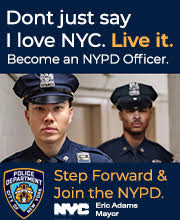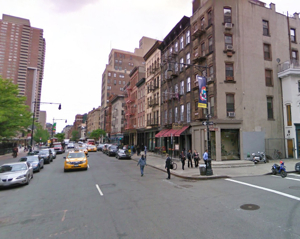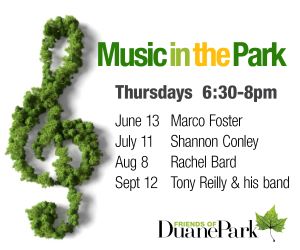Here We Go Again
I am a member of HRP Mamas and have learned that a little boy was hit by a taxi crossing Greenwich Street at Duane to get to the park. Fortunately he was unhurt. Following is the mother’s account posted on HRP:
Re: Accident by Cross-walk on Greenwich
It was my son. As always, I stand in the middle of the cross walk when my kids cross so that if anything, I would be hit first. This taxi driver went around me and ultimately hit my son. […] Because the driver stayed at the scene of the accident, he was not charged and will simply have points taken off of his license! My son is fine, despite the emotional trauma to both kids. Apparently the city has been petitioned to put a top sign at the cross walk, they even had a study done to evaluate the request. They found that there was not enough traffic to warrant a stop sign!!!!!!”
I seem to recall you have written in the past about this crossing and the need for some sort of light or stop sign. Could you please mention the incident on your site and hopefully rally Tribecans to pursue the matter again with DOT?
Here’s what I wrote about it on April 2:
There has long been a push by people who live in the area for a stoplight or a stop sign at Duane. As anyone who regularly crosses there knows, that part of Greenwich is an oddly dangerous corridor, with cars speeding up to make the light at Chambers (or, conceivably, too distracted by all the construction to notice pedestrians coming from all angles). That the area fronts Washington Market Park adds another layer of concern.
The DOT has maintained the street doesn’t have enough traffic to justify adding a light. Here’s a quote from the April 2010 Tribeca Trib: “According to the [Federal Transportation Administration’s] rules, streets must meet a certain ratio of cars to pedestrians to warrant a stop sign or traffic signal. The department last studied the intersection a year ago and found that it did not meet the threshold. In 2008, after a similar study of the crossing, the DOT rearranged the timing of the lights between Harrison and Chambers Streets to slow down traffic. The department also intended to install concrete ‘bulb-outs’ on either side of the intersection in order to narrow the street for pedestrians, but later scrapped the plan, saying it would have been too difficult to relocate the catch basins and utility lines beneath the sidewalks.”
And back in 2008, according to the Trib, DOT commissioner Janette Sadik-Khan explained that a certain number of accidents have to happen (!) before changes can be made: “Friends of Washington Market Park took up the fight for a light more than two years ago. In March, the group’s president, Nelle Fortenberry, sent a letter to DOT Commissioner Janette Sadik-Khan, demanding that the department reverse its decision not to install a traffic light. She called the DOT’s strict adherence to the federal guidelines a’ compromise [of] the safety of hundreds of children and seniors.’ In her written response to Fortenberry, Sadik-Khan backed her department’s decision. At least five accidents that could have been prevented by a traffic light or stop sign would need to occur before the city would install one of the devices, she said. ‘That’s what it’s going to take, someone getting killed,’ said Andre Greaves, a 34-year resident of 310 Greenwich St. ‘I really believe that.’”
The italics are mine. I understand that bureaucracy ends up with these kinds of rules—rules that require people to be hurt before changes that would prevent people getting hurt can be made—but that, in theory, is why leaders exist: to know when those rules need to be broken.
On April 6, DNAinfo reported that “A Department of Transportation spokeswoman said the agency would start a study of the Greenwich and Reade intersection this spring, to see if it requires any changes.”
On May 5, there was another accident at the intersection—well, at Greenwich and Reade, which wouldn’t be an issue if a stop sign went up at Duane.
In May, a reader heard from the DOT that it was considering a speed hump, but the study would take at least six months.
Where does that leave us? We’ve had three accidents (that we know of) since April, but apparently we need two more before the DOT will act. This is where you come in. You can either go over there and throw yourself in front of a car, or you can send a note to the DOT. That link is to a relatively painless online form.

















How about this: the street doesn’t have enough traffic to need ANY traffic. A radical reduction in cars on that street (via bulb outs and other slowing features) would benefit the vast majority of us who live around it and inconvenience very few people. Let’s do this.